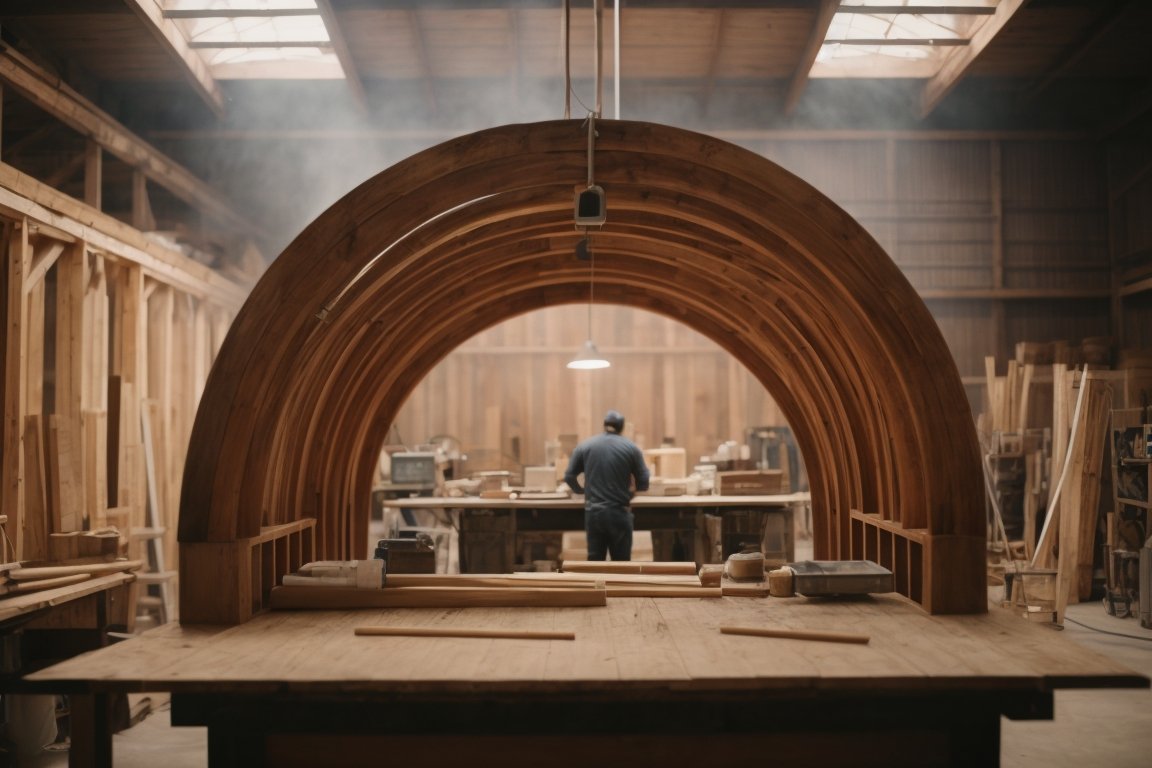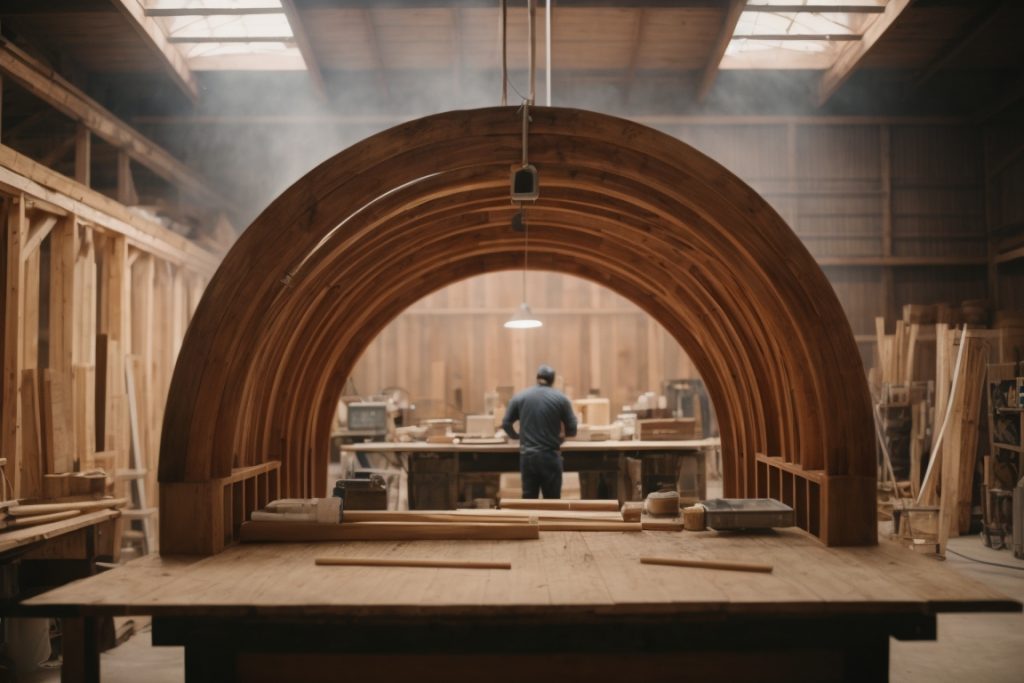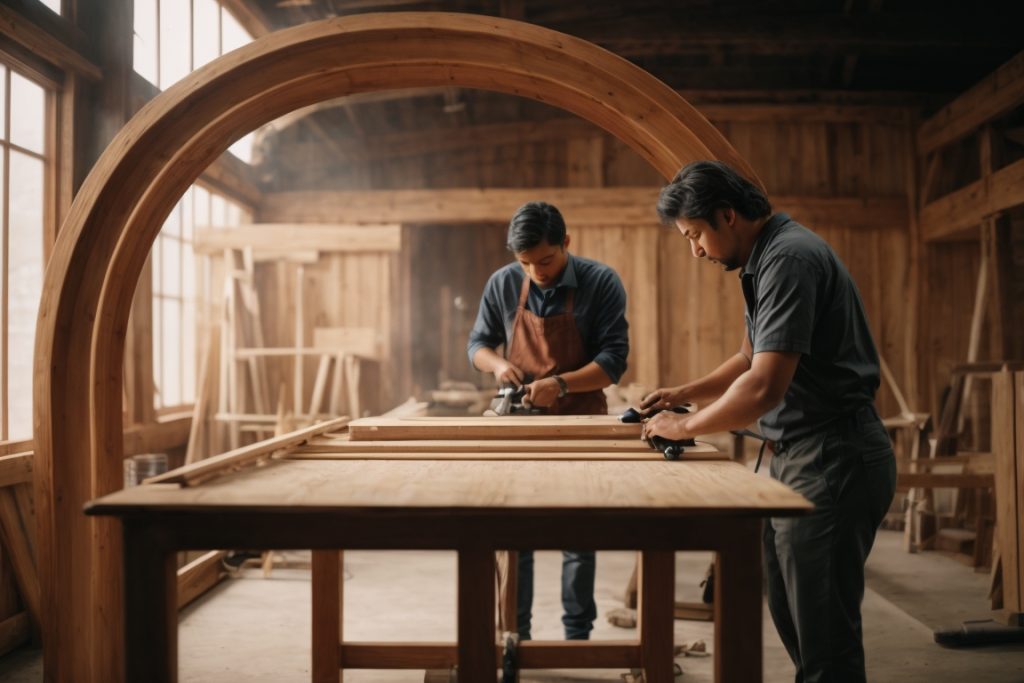Are you looking to add some style and functionality to your windows? Installing wooden blinds can be a great way to achieve both. Wooden blinds are a classic and timeless choice that can complement any decor style. Plus, they offer privacy and light control, making them a practical choice as well.
Before you get started, it’s important to choose the right type of wooden blinds for your windows. Consider the size and shape of your windows, as well as the amount of light you want to let in. You can choose from inside mount, outside mount, or ceiling mount installation, depending on your preferences and the type of windows you have. With the right tools and a little bit of patience, you can easily install wooden blinds yourself and enjoy the benefits they offer.
Understanding Wooden Blinds

If you’re considering adding wooden blinds to your home, it’s important to understand the different types of wooden blinds available and the benefits they offer. In this section, we’ll cover the basics of wooden blinds so you can make an informed decision.
Types of Wooden Blinds
There are two main types of wooden blinds: real wood and faux wood. Real wood blinds are made from natural wood, such as basswood, oak, or cherry. Faux wood blinds, on the other hand, are made from composite materials that mimic the look of real wood.
Real wood blinds are generally more expensive than faux wood blinds, but they offer a more authentic and natural look. Faux wood blinds are more durable and resistant to moisture, making them a great option for high-humidity areas like bathrooms and kitchens.
Benefits of Wooden Blinds
Wooden blinds offer several benefits, including:
- Insulation: Wooden blinds can help insulate your windows and keep your home cooler in the summer and warmer in the winter.
- Light control: Wooden blinds offer excellent light control, allowing you to adjust the amount of light that enters your room.
- Durability: Wooden blinds are durable and long-lasting, making them a great investment for your home.
- Style: Wooden blinds offer a classic and timeless look that can complement any decor style.
Overall, wooden blinds are a great option for homeowners who want a stylish and functional window treatment. Whether you choose real wood or faux wood blinds, you’ll enjoy the benefits of improved insulation, light control, and durability.
Preparation
Before you start installing wooden blinds, it’s important to ensure that you have all the necessary tools and that you have accurately measured your window. This will help ensure that the installation process goes smoothly and that your blinds fit perfectly.
Tools Needed
Here are the tools you’ll need to install wooden blinds:
| Tools |
|---|
| Measuring tape |
| Screwdriver or power drill |
| Level |
| Pencil |
| Mounting brackets |
| Screws |
Make sure you have all the necessary tools before you start installing your wooden blinds. If you’re missing anything, you can find most of these tools at your local hardware store.
Measuring Your Window
Before you start installing your wooden blinds, you’ll need to measure your window to ensure that your blinds fit properly. Here’s how to do it:
- Measure the width of your window from the inside of the frame at the top, middle, and bottom. Record the smallest measurement.
- Measure the height of your window from the inside of the frame at the left, center, and right. Record the longest measurement.
- If you’re installing inside mount wooden blinds, subtract 1/2 inch from the width and height measurements to allow for clearance. This will ensure that your blinds fit inside the frame of your window.
- If you’re installing outside mount wooden blinds, add 2 to 4 inches to the width and height measurements to ensure that your blinds cover the entire window.
By following these steps, you’ll be able to accurately measure your window and ensure that your wooden blinds fit perfectly.
Purchasing Your Wooden Blinds

When it comes to purchasing wooden blinds, there are a few things you should consider to ensure that you get the right product for your needs. Here are some tips to help you make an informed decision:
1. Measure your windows
Before you start shopping for wooden blinds, you need to know the size of your windows. Measure the width and height of each window to determine the size of the blinds you need. It’s important to get accurate measurements to ensure that your blinds fit properly.
2. Choose the right type of wood
There are several types of wood to choose from when it comes to wooden blinds. Some popular options include basswood, bamboo, and faux wood. Each type of wood has its own unique characteristics, so it’s important to choose the one that best suits your needs.
3. Consider the color and finish
Wooden blinds come in a variety of colors and finishes, so you can choose the one that best matches your decor. Some popular options include natural wood finishes, white, and black. Consider the color of your walls and furniture when choosing the color and finish of your blinds.
4. Decide on the style
Wooden blinds come in several styles, including Venetian, vertical, and horizontal. Venetian blinds are the most popular option, but vertical and horizontal blinds can also be a good choice depending on your needs.
5. Check the warranty
When purchasing wooden blinds, it’s important to check the warranty. Make sure you understand the terms and conditions of the warranty before making your purchase.
By considering these factors, you can choose the right wooden blinds for your home and enjoy the benefits of this classic window treatment.
Installation Process
Installing wooden blinds is a simple process that can be done by anyone with basic DIY skills. Here are the steps you need to follow:
Attaching the Brackets
The first step in installing wooden blinds is to attach the brackets to the window frame. Use a measuring tape to determine the location of the brackets, and mark the spots with a pencil. Position the brackets at the same height on both sides of the window. Use a level to ensure that the brackets are straight, and then screw them into place.
Inserting the Blinds
Once the brackets are in place, you can insert the blinds into the brackets. Hold the headrail of the blinds at an angle and insert one end into the bracket. Then, snap the other end of the headrail into the second bracket. Make sure that the blinds are level and centered in the window frame.
Securing the Valance
The valance is the decorative piece that covers the headrail of the blinds. Most wooden blinds come with a valance that can be attached after the blinds are installed. To attach the valance, slide it onto the headrail and secure it with the provided clips or screws.
Adjusting the Length
If the blinds are too long for your window, you can adjust the length by removing some of the slats. Use a pair of scissors or a saw to cut the excess slats from the bottom of the blinds. Be sure to measure the blinds carefully before cutting to avoid making any mistakes.
Testing the Blinds
Before you finish the installation process, test the blinds to make sure they are working properly. Open and close the blinds a few times to ensure that they move smoothly and evenly. If you notice any problems, adjust the brackets or the blinds until they work correctly.
That’s it! By following these simple steps, you can install wooden blinds in your home and enjoy the benefits of beautiful, functional window treatments.
Maintenance Tips
Cleaning
To keep your wooden blinds looking their best, regular cleaning is key. Dust and debris can accumulate quickly, so it’s important to establish a cleaning routine. Here are some tips for cleaning your wooden blinds:
- Use a soft, dry cloth or feather duster to remove dust from the slats. Be gentle to avoid damaging the finish.
- For more thorough cleaning, use a damp cloth or sponge. Avoid using too much water, as excess moisture can warp the wood.
- If your blinds are heavily soiled, you can use a mild soap solution. Be sure to rinse thoroughly and dry completely.
- Never use abrasive cleaners or harsh chemicals, as these can damage the finish.
Repairing Minor Damages
Despite your best efforts, accidents can happen. If your wooden blinds sustain minor damages, there are a few things you can do to repair them:
- If a slat becomes bent or warped, you can try gently bending it back into place. Be careful not to apply too much pressure, as this can cause further damage.
- If a slat breaks, you can replace it with a new one. Most blinds come with extra slats for this purpose. Simply remove the old slat and slide the new one into place.
- If the cord becomes tangled or frayed, you can untangle it or trim off the frayed end. If the cord is severely damaged, you may need to replace it. Most blinds come with replacement cords and instructions for how to install them.
By following these maintenance tips, you can keep your wooden blinds looking beautiful for years to come.



